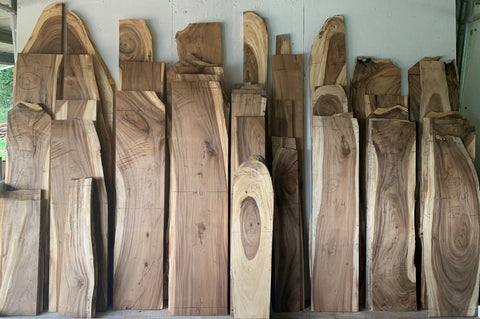Monkeypod
 Monkeypod (Samanea saman) also sometimes known as albizia saman or the rain tree, is a species of flowering tree in the pea family, Fabaceae, that is native to the Central and South America. Its range extends from Mexico south to Peru and Brazil, but it has been widely introduced to South and Southeast Asia, as well as the Pacific Islands, including Hawaii.
Monkeypod (Samanea saman) also sometimes known as albizia saman or the rain tree, is a species of flowering tree in the pea family, Fabaceae, that is native to the Central and South America. Its range extends from Mexico south to Peru and Brazil, but it has been widely introduced to South and Southeast Asia, as well as the Pacific Islands, including Hawaii.Common names include saman, rain tree and monkeypod. It is often placed in the genus Samanea, which some authors argue is subsumed within Albizia entirely.
The leaves of monkeypod trees fold up at night and during rain (hence; rain tree), similar to our local sensitive plant (Mimosa pudica).
Monkeypod trees are frequently planted along roadways and as a shade tree. A mature tree with a crown diameter of 50 feet absorbs almost 30 tons of CO2 annually. That's the weight of a female adult, every day!
Unfortunately, the growing climate in Hawaii can be too perfect for the large trees. Often they quickly outgrow their urban environments, which is how we frequently acquire the monkeypod logs that we mill.
We specialize in monkeypod, and it is usually the majority of our selection. It is among the most popular woodworking woods in Hawaii because of it's beauty, ease of use, and prevalence. It has a walnut-like creamy brown heartwood and off-white to golden yellow sapwood. It often has compression curl in wood from the base of the tree, branch intersections, and heavy elbows.
If the tree or legs were left dead and grounded for more than a few weeks the sapwood can often have beautiful unique staining and zone line spalting from several different fungi. The most likely species we suspect are turkey tail (trametes versicolor) for the bleached patches and dark zone lines, dead man's fingers (xyleria polymorpha) for zone lines, scytalidium cuboideum for small pink patches and streaks.
Janka Hardness: 900 lbf (4,010 N)
Average Dried Weight: 38 lbs/ft3 (600 kg/m3)
Specific Gravity: .5

One of our lumber racks stocked with Monkeypod (Samanea saman) wood at Kalani Hardwoods.

Monkeypod (Samanea saman) log on a Lucas Mill with help from Keali'i Frank from The Nation of Hawaii Sawmill.

Monkeypod (Samanea saman) log being milled on Lucas Mill during rain.

Monkeypod (Samanea saman) wood grain with zone line spalting from xyleria polymorpha fungus.
More information:
